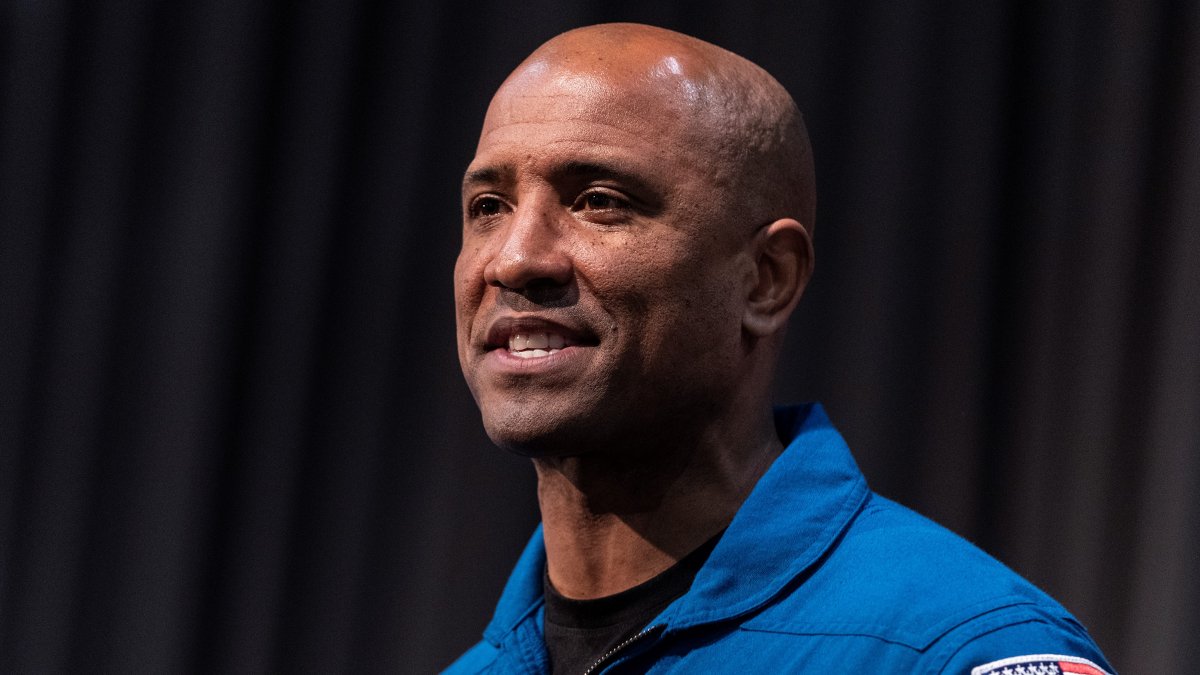Southern California astronaut Victor Glover was selected Monday to take the next big leap in space travel.
Glover, an Ontario high school graduate in 1994, will be part of the four-member crew of the Artemis 2 mission around the moon, NASA announced Monday.
Glover will pilot the Orion spacecraft from THISSA around the moon after traveling from Cape Canaveral on the Florida coast.
NASA presented the new AEXMU suit that three astronauts will wear during the Artemis III mission.
The launch of the mission is scheduled for November 2024 at the earliest.
During Monday’s announcementGlover thanked family members for their support.
“It’s a beautiful day,” Glover said. “We have a lot to celebrate, and it’s more than just the four names that have been announced. We need to celebrate this moment in human history.”
“This is the next step that takes humanity on its journey to Mars.”
The Artemis 2 mission will send Orion and a crew farther than people have ever traveled from Earth. It is a precursor to Artemis 3, which is aiming for the first crewed moon landing since Apollo 17 in 1972.
The first unmanned test flight took place last year.
The missions, named after the moon goddess and twin sister of Apollo in Greek mythology, are seen as stepping stones to a possible manned mission to Mars.
The three Americans and one Canadian they will be the first to fly NASA’s Orion capsule, which will launch on a Space Launch System rocket from Kennedy Space Center.
They will not land or enter lunar orbit, but instead will fly around the moon and return directly to Earth, a prelude to the lunar landing of two more a year later.
They tell us their point of view on the space agency and their vision of what Artemis I means.
Mission Commander Reid Wiseman will be joined by Glover; Christina Koch, who holds the world record for longest spaceflight by a woman; and Canadian Jeremy Hansen. They’re all space veterans, Hansen hopes.
This is the first lunar crew to include a woman and a non-American person, and the first crew from NASA’s new moon program called Artemis. Late last year, an Orion capsule with just a “dummy” on board flew to the moon and returned in a long-awaited dress rehearsal.
During Apollo, NASA sent 24 astronauts to the Moon from 1968 to 1972. Twelve of them landed. All were test pilots with a military background, except Apollo 17’s Harrison Schmitt, a geologist who closed the moon landing era with the late Gene Cernan.
As long as this upcoming 10-day trip to the Moon goes well, NASA aims to send two astronauts to the Moon by around 2025.
NASA has chosen 41 active astronauts for its first Artemis crew. Canada had four candidates.
Associated Press contributed to this article.
This story first appeared on Telemundo 52’s sister station NBCLA. Click on here to read this story in English.

